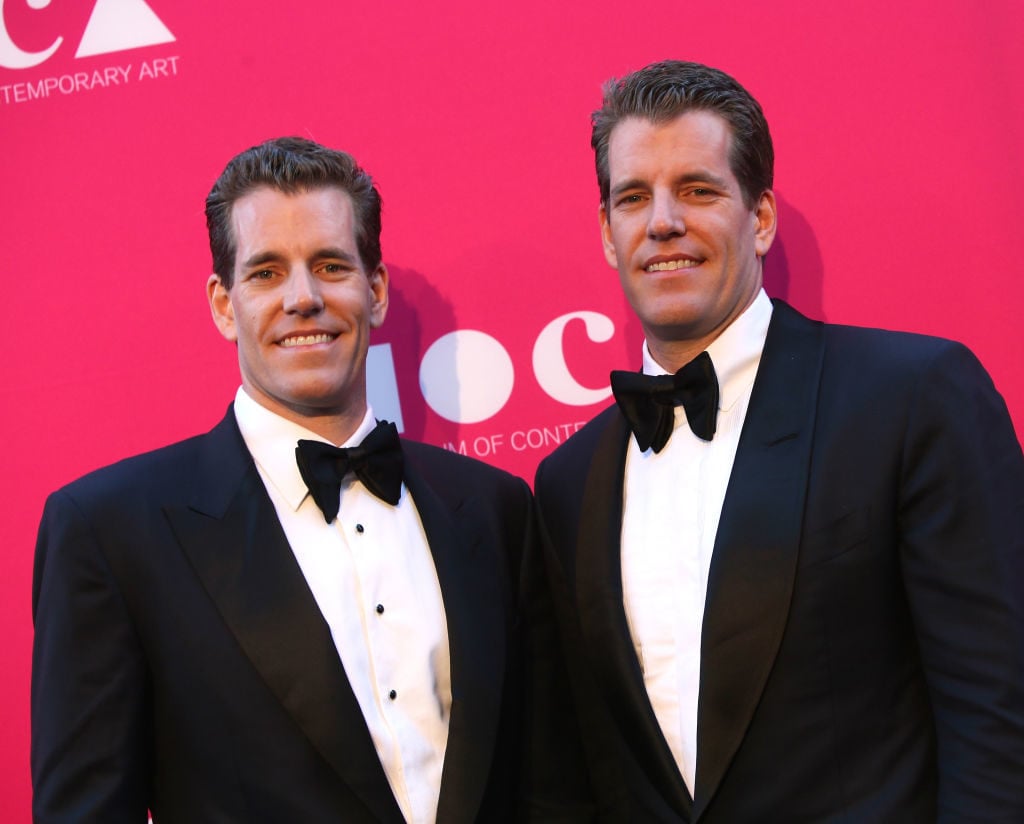Market
The Winkelvoss Twins, Bitcoin Billionaires and Foes of Facebook, Just Launched a New Blockchain Art Marketplace
On Nifty Gateway, you can buy and sell limited-edition artworks through blockchain.

On Nifty Gateway, you can buy and sell limited-edition artworks through blockchain.

Artnet News

Tyler and Cameron Winklevoss, the identical twins and crypto-entrepreneurs who once alleged that Mark Zuckerberg stole the idea for Facebook from them, have launched a new online marketplace to sell limited-edition digital art.
The rebranding of the website Nifty Gateway—a startup that the twins’ cryptocurrency company Gemini Trust Co. acquired last year, marking their first-ever acquisition—allows artists and collectors to buy, sell, and track ownership of digital art through blockchain technology.
The relaunched Nifty Gateway will enable artists to issue limited-edition works and, if you believe the site’s pitch, take better control of the market for their work. Duncan and Griffin Cock Foster, who founded Nifty Gateway—and who, we kid you not, are also identical twins—compare the site’s goods to “digital Air Jordans.”
“If I own a pair of shoes and Nike shuts down, I don’t expect that my shoes would just disappear,” Duncan Cock Foster told the Intelligencer in a profile earlier this month. “We expect our items to behave a certain way, and past digital items have not.”
Until recently, the best-known objects sold on Nifty Gateway—grouped under the umbrella term “Nifties”—were digital breeding cats from the popular novelty CryptoKitties. But the relaunched site encompasses a wide range of digital artwork. (New “exhibitions,” or groups of work, are released every third Thursday.)
Michael Kagan, an artist perhaps best known for his collaboration with Pharrell Williams’s Billionaire Boys Club clothing company, has contributed a quintet of space-themed digital paintings that range in price from $3,000 to $5,000. Lyle Owerko, whose image of the Twin Towers exploding famously graced the cover of TIME’s 9/11 issue, is selling different-colored graphics of boomboxes. A brass-colored boombox goes for $20, while the gold one goes for $2,500.
“I haven’t done anything like this before, which is all the more reason to do this now,” Owerko told Bloomberg about the opportunity.
Of course, Nifty Gateway isn’t the first enterprise to try to tap into the market for digital art—but it is perhaps the best capitalized. Upstart companies with names like R.A.R.E, DADA, Snark, and ARTBLX have previously branded themselves as the go-to marketplaces for digital art, though none have made a splash beyond the niche world of crypto-investing. (After its launch, ARTBLX later pivoted its business model to selling fractional-ownership shares in “investment-grade” artworks.)
The Winklevoss twins predict, loftily, that the market for “Nifties” could become as large as those for art, collectibles, and gaming digital items combined. One hopes that the venture has a better outcome than their last art-related investment. In 2014, the twins announced with fanfare that they had invested in the online auction house Paddle8. Yesterday, Paddle8 filed for bankruptcy.